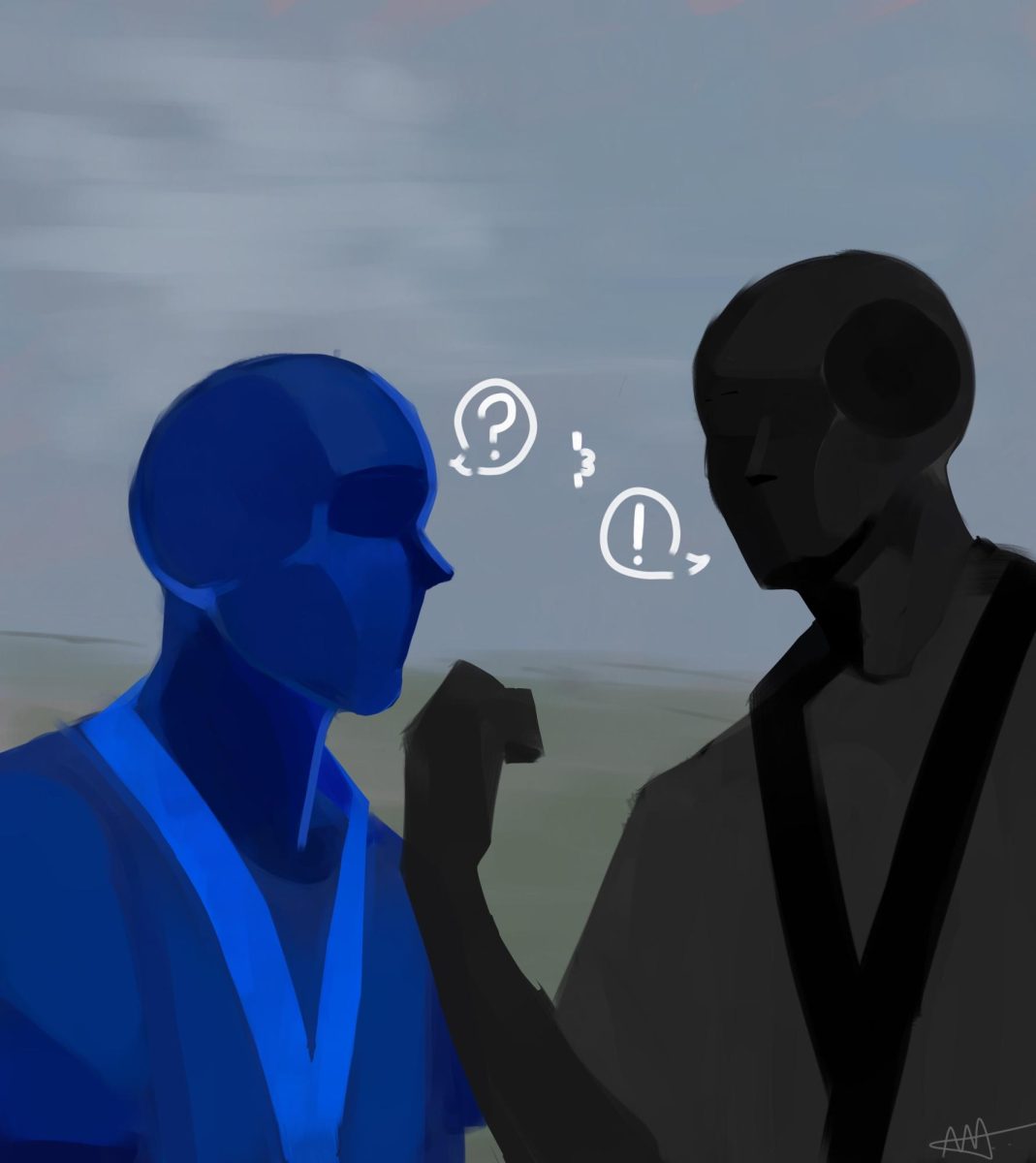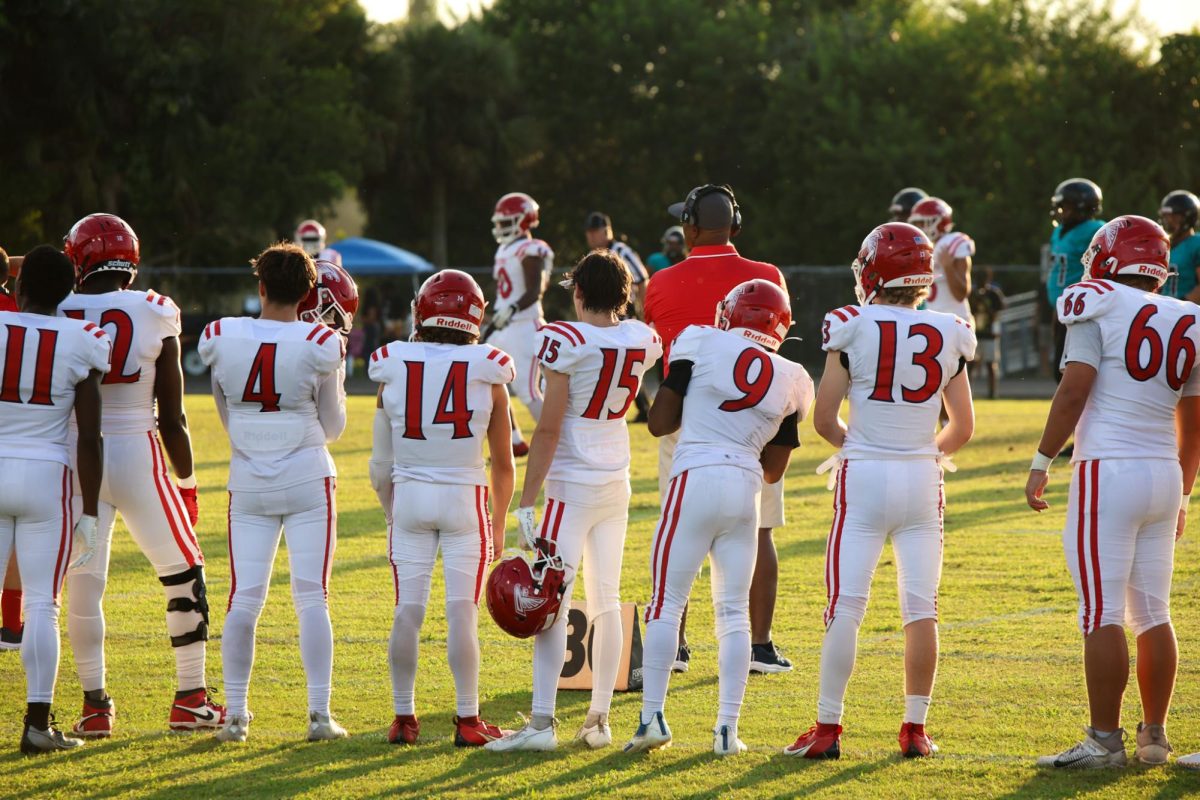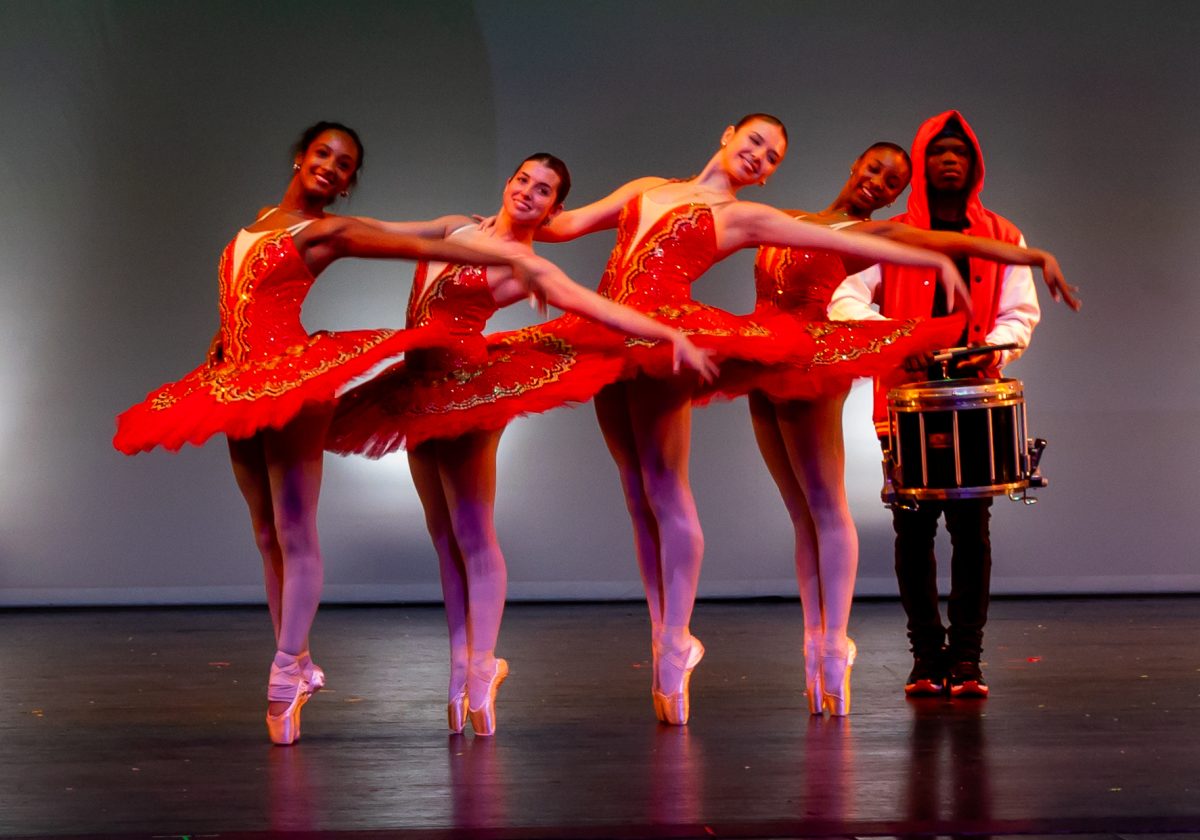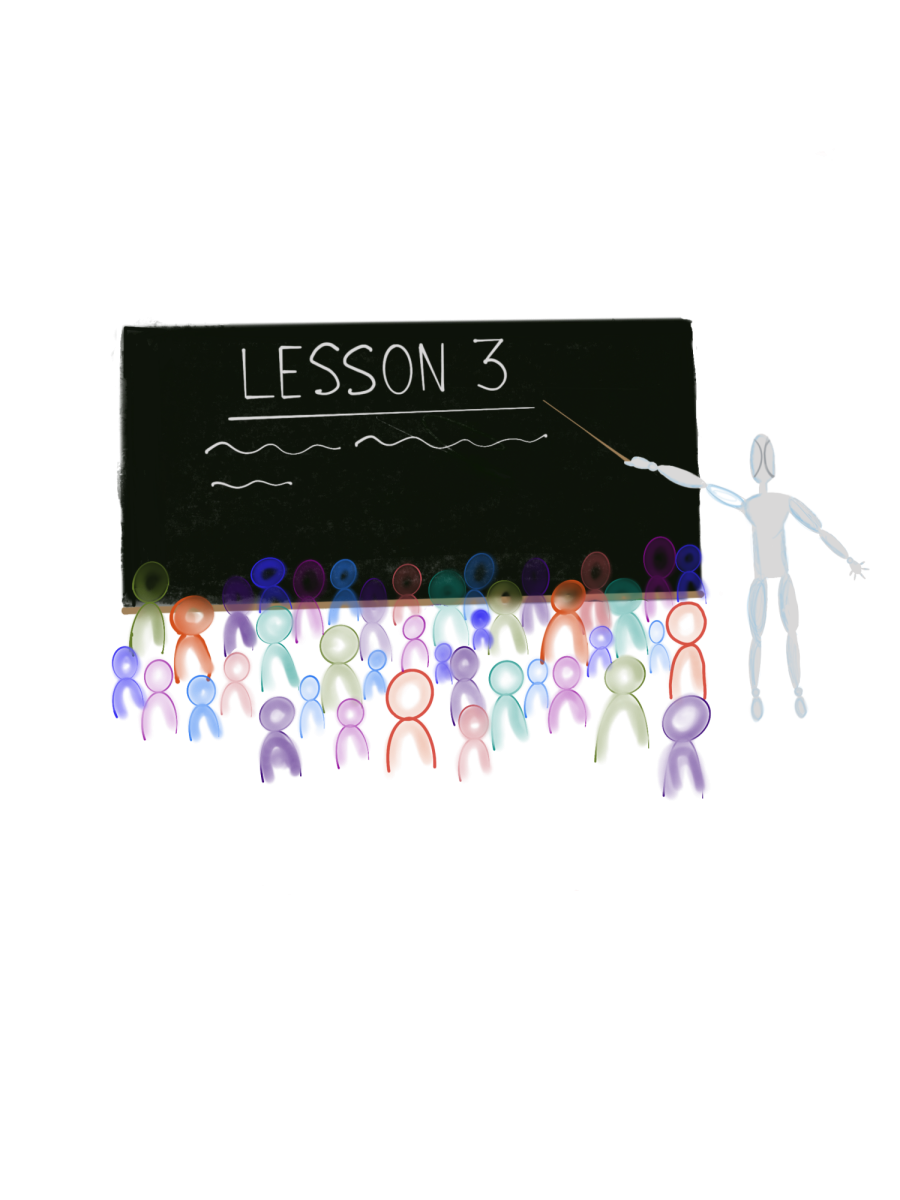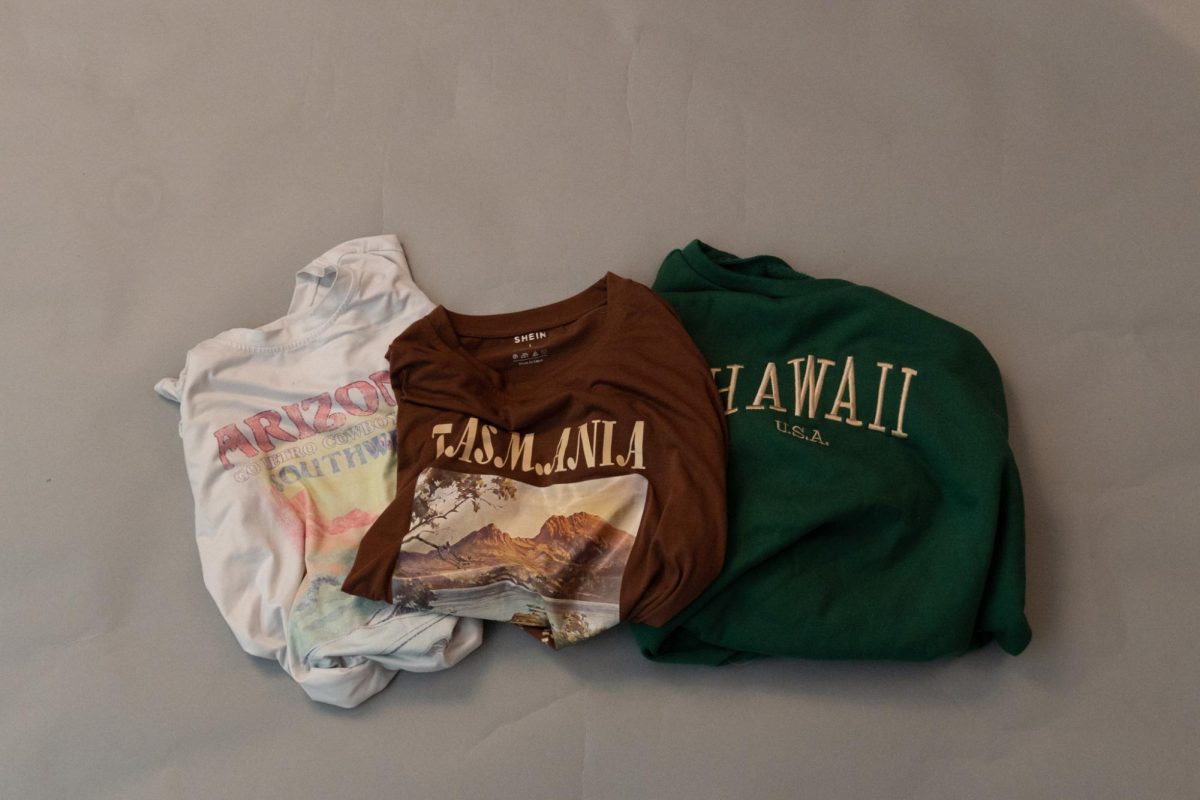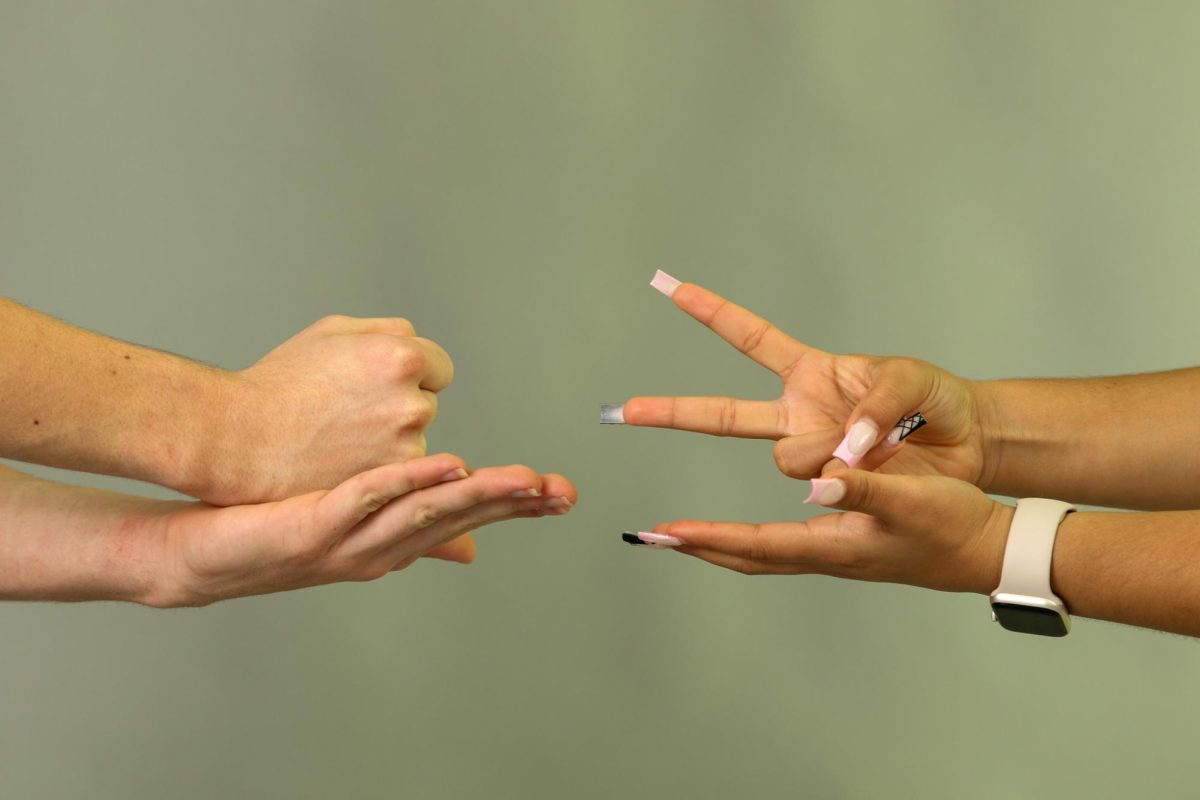I am a firm believer of addressing controversy through art. Indifference between my classmates surfaced on nearly all social media forums and the school, especially among the theatre and communication arts department. With what seemed to be a line drawn between “racist, offensive art forms” and “award-winning productions” based off of our spring musical production of “Thoroughly Modern Millie,” I wondered why this line couldn’t be erased—more so why my peers couldn’t acknowledge the fascinating disputes that the script proposed.
In a similar light, when I was younger, I came to despise the art of a caricature. At my friend’s seventh birthday party, a hired caricaturist insisted that my eyes made up 75 percent of my face, and my teeth the remaining 25. My reaction: a face 100 percent covered in tears. I was astounded. “This is art?” I thought to myself. I spent the majority of my time at that birthday party sitting, crying in the bathroom and missing the cake serving.
As I grew up, the thought of my caricature fiasco never settled with me. I continued to wonder why the artist only (and so carefully) exaggerated my large eyes and crooked teeth, yet failed to address my thick eyebrows and pale skin.
In art I see at my high school today, I notice that artists exclude particular features to accent others. Studying the classic works of playwrights like William Shakespeare poses a similar debate: is it necessary to read a language that isn’t relevant in the 21st century? Of course. “Out-dated” stereotypes such as the gender roles in Shakespeare’s “The Taming of the Shrew,” for example, are what make modern controversy so poignant. Likewise, it isn’t a matter of time lapsed, but the impact that these same roles have had over society for ages and the importance of them today.
In “Thoroughly Modern Millie,” it was the character Mrs. Meers that piqued the interest of some of my peers. What I noticed as I watched the play, however, was Muzzy van Hossmere, a character of illustriousness, wealth and praise from her community played by a minority: a colored student. Such a unique detail in my eyes complimented the script’s profound commentary on such modern stereotypes. I saw Muzzy as a symbol of strength and stability; she accentuated the script, just as the controversial Mrs. Meers did. Between classic works and modern writings, art shows us that all of its features should be opportunities for discussion both in and outside of our theatre and literature classes. They should be permeating through conversation, not ignored because of their offensive content.
The representation of these stereotypes, perhaps comparable my facial flaws, is an opportunity for discussion: is controversial art worth the offense it causes? My lighthearted, love for theatre says yes. Art, as I see it now, is not a balance of truth. It may be controversial, but it is present and worthwhile. It is a medium of the same lies and stereotypes that mold our society. In the same way that one feature of my face, perhaps my mouth instead of eyebrows, can consume an artist’s vision of me, art may be questionable, but will always be beautiful. For me, as I stare at the canvas of my buck-teeth and tiny idiosyncratic features, I will continue to scrunch my brow with admiration.






![[BRIEF] The Muse recognized as NSPA Online Pacemaker Finalist](https://www.themuseatdreyfoos.com/wp-content/uploads/2025/03/IMG_2942.jpeg)



















